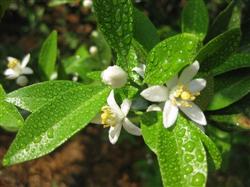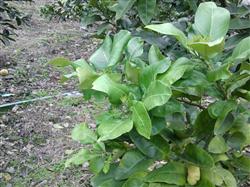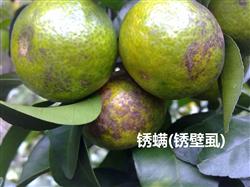Planting technique of sugar orange: how to protect the fruit of sugar orange?

How to protect the fruit of sugar orange? What kind of reason can cause sugar orange to drop flowers and fruits? Please give guidance on the formation of sugar orange drop flowers and fruit drop factors are as follows: 1, the tree nutrition is insufficient, which is the main cause of fruit drop. 2. Low temperature and freezing injury in early spring resulted in dysplasia of floral organs, many deformed flowers, and decreased ability of pollination and fertilization. For example, the florescence encounters low temperature and overcast rain for too long, the activity of insects is weak, the vitality of male pollen is not enough, the female stigma mucus is leached by Rain Water, or the florescence encounters a high temperature of more than 36 ℃, the air is dry, the stigma dries up quickly, and the florescence is too short, which affects the chance of pollination and fertilization. In the small fruit stage, when we encounter high temperature and drought, branches, leaves and fruit strive for water, accelerate fruit shedding, or encounter rainy days for too long, the soil water content is too high, root growth is blocked, vitality decreases, affecting the synthesis of cytokinins, affecting the balance of endogenous hormones, resulting in a large number of fruit drop. 3. Insufficient auxin content or hormone imbalance in young fruit is also an important cause of fruit drop. 4. Serious diseases and insect pests, such as flower buds deformed by Hualaizui, a large number of fallen leaves caused by red spiders, fallen leaves and fruits caused by scab and anthracnose, and fruit drop caused by leaf roll moth and fruit sucking armyworm. 5. Unreasonable pruning and shaping, resulting in too long or too delicate mother branches, too shaded canopy, insufficient ventilation and light, poor photosynthetic efficiency, and excessive dispersion of tree nutrients. Sugar orange flower and fruit protection measures: 1, timely release of autumn shoots. For example, in the area south of the Tropic of Cancer, if the plant grows strongly for 2 ~ 3 years and has little or just trial production, the autumn shoot should be released before and after the End of Heat. 4-year-old 6-year-old trees with autumn shoots from Greater Heat to the Beginning of Autumn. Old trees of more than 7 years old should be planted before and after Greater Heat. 2. Strengthen the management of fertilizer and water, pay attention to the input of organic fertilizer and the timely supplement of foliar fertilizer. We recommend the time and frequency of fertilization for sugar tangerines that have been hung. In general, it is mainly divided into four periods, such as: base fertilizer (winter fertilizer), the amount of fertilizer used accounts for about 35% of the total amount of fertilizer in the whole year, and is often applied before and after fruit harvest. Generally, organic fertilizer is mainly used, supplemented by available phosphorus and potassium and appropriate amount of nitrogen, in order to help plants restore tree potential, promote flower bud differentiation and safe overwintering; promote bud fertilizer. The amount of fertilizer used accounts for about 20% of the total fertilizer in the whole year, and it is generally appropriate to apply it two weeks before spring bud germination, so as to ensure strong shoots to promote flowers, prolong the life of old leaves, and increase fruit setting rate. Often give priority to available nitrogen fertilizer, with an appropriate amount of phosphorus and potassium fertilizer. In case of spring drought, irrigation should be combined to give better play to fertilizer efficiency; stable fruit fertilizer. The amount of fertilizer used accounts for 15% of the total amount of fertilizer applied in the whole year, and it is generally applied before the end of the first physiological fruit drop to the second physiological fruit drop. Mainly available nitrogen and phosphorus, with appropriate amount of potassium. During this period, the young fruit of sugar orange is in the peak period of cell division, and it is also the first peak of root growth. If the nutrition can not keep up, abnormal physiological fruit drop will occur. Strong fruit fertilizer accounts for about 30% of the total fertilization in the whole year. At this time, the fruit expands rapidly, and it is also the period of summer shoot enrichment and autumn shoot extraction. Generally, it is applied within 1-2 weeks before autumn shoots, mainly nitrogen, properly combined with phosphorus and potash fertilizer. Fertilizer application rate: the ratio of the demand for nitrogen, phosphorus and potassium of sugar orange is: 1. 0. 3-0. 5. 2. We suggest that the amount of fertilizer application is an important basis for calculation on the basis of economic yield (the pure nitrogen needed for 50kg economic yield is about 0.5kg pure phosphorus (P2O5) 0.150.2kg, pure potassium (K2O) is 0.6kg). Based on the above analysis and calculation, the amount of fertilizer applied in each period is as follows: base fertilizer: 10 kg chicken manure or pigeon manure or 2.5 kg peanut bran or 25 kg pig manure, 0.35 kg calcium superphosphate, 0.25 kg potassium chloride or 0.30 kg potassium sulfate. Pre-bud fertilizer: 0.25 kg urea, 0.25 kg calcium superphosphate, 0.20 kg potassium chloride or 0.25 kg potassium sulfate. Stable fruit fertilizer: 0.16 kg urea, 0.20 kg superphosphate, 0.15 kg potassium chloride or 0.18 kg potassium sulfate. Strong fruit fertilizer: 0.35 kg urea, 0.15 kg calcium superphosphate, 0.3 kg potassium chloride or 0.35 kg potassium sulfate. It should be noted that citrus trees are moderately tolerant to chlorine, so potassium chloride and potassium sulfate should be applied alternately to avoid excessive chloride ion. In addition, there are more types of fertilizers. If some friends like to apply compound fertilizers, they should be calculated according to the actual vegan content of commercial fertilizers. For moderate elements such as calcium, magnesium, sulfur and zinc are also indispensable elements for plants, as we are not clear about the soil conditions around the country, it is not possible to carry out a long and detailed analysis. It is recommended that you clear the garden in winter. Sprinkle lime powder (containing calcium) to properly supplement amino acid liquid fertilizer containing zinc, boron and magnesium in plant shoots, flowers and fruits, such as gold Lvxing, Lvfenwei and other foliar fertilizers. 3. Control the growth of branches. Controlling shoot growth is the main way to ease the contradiction between shoot and fruit. Because citrus fruit trees, in the vegetative growth, but also for reproductive growth. Plants with excessive growth, too many spring shoots, medium flowers or few flowers should be thinned according to the principle of strong and weak, control and control, and some vegetative branches of spring shoots should be removed. For example, the trees with medium flowers should remove 1max 3 and the trees with less flowers should remove 3max 5, leave 6-8 leaves on the spring shoots and spray foliar fertilizer to make them mature as soon as possible. For multi-flowering and weak trees, some flower branches should also be removed. In principle, all the summer shoots should be wiped off or the two basal leaves should be coring, or when the shoot length is about 2 cm, paclobutrazol of 500-1000ppm should be sprayed to inhibit the emergence or growth of summer shoots. For the overgrown plants, the main branches were cut at 2 / 3 of Xiehua. 4. Reasonable application of plant growth regulators to protect fruit. After general fertilization, the development of fruit begins with the formation of pistil and ovary primordium, and then goes through the stages of fruit cell division, cell enlargement, fruit ripening and so on. Generally speaking, the stage from the formation of the ovary in mid-late March to the basic end of physiological fruit drop in June belongs to the stage of cell division, during which the sand sac primordial cells in the fruit divide, and the division is more exuberant after forming small fruit, until the sand sac cell division is stopped. It is the stage of embryo development, seed coat development and rapid growth of cotyledons. During this period, the content of cytokinin is relatively high, and plant cytokinin is mainly synthesized from the root tip, during this period, because the soil temperature is still low, the root activity is poor, and the content of cytokinin products is often not enough to meet the needs of plant reproductive growth, so it is appropriate to spray the speed of cell division in this period to protect fruit. Such as 20ppm's σ-benzylaminopurine. There are also some fruit growers who spray 30-50ppm "920" (gibberellin) 2-3 times during this period. The main effect of spraying gibberellin is to inhibit the increase of abscisic acid and reduce the formation of abscisic acid. And increase the thickness of the pericarp and reduce fruit dehiscence. We think that cytokinin, auxin and gibberellin all have the effect of anti-abscisic acid. Therefore, the application can be carried out alternately. In addition, brassinolide (brassinolide) is generally sprayed with 0.04ppm, which can be used in combination with the above plant growth regulators. The effect can be strengthened. Because brassinolide can regulate the balance of endogenous hormones in different stages of plant growth. 5. Reasonable thinning of flowers and fruits. Reasonable flower thinning and fruit thinning is also one of the measures to solve the contradiction between vegetative growth and reproductive growth. Therefore, reasonable flower thinning and fruit thinning is for better flower and fruit protection. Among the measures to control shoot growth, we have introduced the situation of flower thinning. When the physiological fruit drop is over, that is, the stage of fruit determination, fruit thinning should be carried out on the plants with more fruit. The principle of fruit thinning is generally based on the proportion of leaves and fruits. The leaf-fruit ratio of sand sugar orange should be controlled at 70-80:1. 6. Pruning and shaping should be carried out reasonably. Some fruit growers may think that the key to fruit preservation is fertilization and drug regulation, while pruning and shaping has little to do with fruit preservation. It can be said that reasonable pruning and shaping is the main basis for stable and high yield of citrus fruit trees. It is not only one of the most important measures to solve the contradiction between vegetative growth and reproductive growth, but also the key to solve the rational distribution of tree nutrition. It is by no means easy to understand and master reasonable and advanced pruning and plastic techniques. As for the pruning and shaping techniques of citrus trees such as sugar oranges, as there are too many contents and knowledge involved, we will not elaborate on them one by one here. You can obtain them from the cash cow editorial department, study them carefully, study them, and then master them through practice. Click to get more sugar orange planting techniques click to get more fruit planting techniques
- Prev

Planting technique of sugar orange: how to apply fertilizer to sugar orange?
How to fertilize sugar oranges? Which nutrients are good for sugar tangerines? Please give guidance on the essential elements in the growth process of sugar orange: nitrogen, phosphorus, potassium, (a large number of elements), calcium, magnesium, sulfur (medium elements), zinc, manganese, iron, copper, boron, molybdenum, (trace elements). Each kind of nutrition has a certain function, lack.
- Next

Sugar orange planting techniques: what are the diseases and insect pests of sugar orange in August?
What are the diseases and insect pests of sugar orange in August? Please introduce and guide the methods of prevention and control in August, which is from summer shoot growth to autumn shoot emergence, so there are more diseases and insect pests, the main pests are: rust mite, red wax scale, leaf moth, skin explosion, longicorn beetle; the main diseases are: canker, foot rot; detailed control methods.
Related
- Moge, come on! The staff of the peasant association in the producing area of cantaloupe were frightened when the crowd gathered.
- Causes and Solutions of low Fruit setting rate of Apple
- Symptoms and control measures of passion fruit virus disease
- Fruit growing lesson: how do apple orchards keep high yields?
- Can you build orchards in the mountains? What are the pros and cons?
- How to manage the coloring period of Crisson grape?
- This paper introduces the processing technology of two kinds of fig products.
- How much is a month for retired teachers in rural areas by 2020?
- How can strawberry planting increase sugar content? We should pay attention to management in many aspects.
- What are the cultivation techniques on how to improve the yield of golden fruit?

